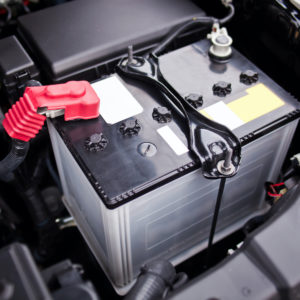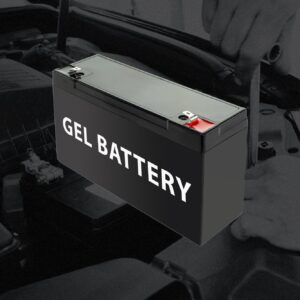A car battery that doesn’t hold a charge won’t start the engine. It creates a head-scratching situation, especially if it dies out on the road with no auto shop in sight. Thankfully, there are portable battery chargers you can use to get your vehicle moving again.
What are Portable Battery Chargers for Cars?
A portable battery charger has a powerful battery designed to recharge dead car batteries anytime and anywhere. It provides enough power to start and disperse energy to the rest of the car.
Types of Car Battery Chargers
The three types of car battery chargers: trickle, maintainer, and restorer chargers. One way or another, they all provide power to the battery.

Trickle Chargers
A trickle charger is the slowest of the three because it has the lowest amp charge. It roughly takes 24 hours to power up a vehicle. One advantage of trickle chargers is they’re portable, so you can take them along on road trips without any issues.
Maintainer
A maintainer continuously supplies power to car batteries, as opposed to trickle chargers that can only provide enough power to restore a dead battery.
It’s up to the driver to decide whether to turn maintainers on or off.
Some advanced maintainers called “smart” chargers also have modes to address the needs of absorbed glass mat (AGM) batteries. They can also desulfate the lead in flooded batteries to reverse the crystallization of unused batteries.
There are also solar-powered battery maintainers that connect to the car battery. They have low amperage, so they’re often used to offset battery discharge instead of recharging weak batteries. Solar-powered maintainers also come with a reverse charge-blocking diode to prevent battery drainage at night.
Restorer
A restorer detects battery sulfation and uses a desulfator to restore it to when it’s capable of charging. This is because car batteries that are low in power start to build lead sulfate crystals that could prevent them from charging properly.
How to Use Portable Battery Chargers for Cars
Before using a portable battery charger, you’ll need to find a safe and secure place to charge. Also, ensure the charger is powered up by charging it beforehand.
The process usually involves the steps below:
- Step 1: Figure out the connections. Determine which connectors go where by reading the instructions that come with the charger.
- Step 2: Attach the cables by connecting the jump starter to the battery. Do this by clamping the red cable to the battery’s positive post and the black cable to the negative post. You might get an alert if you connect the cables to the wrong posts.
- Step 3: Make sure the device is in a safe place to keep it from getting in the way of moving parts when you start the engine.
- Step 4: Turn the charger on.
- Step 5: Start the engine car engine.
- Step 6: Turn the charger off while the engine is still running, then carefully remove the cables from the posts.
It typically takes 6 to 12 hours to fully charge a car’s battery, depending on how much amperage the charger supplies.

Portable Battery Chargers vs. Jump Starters
While the two share the same purpose of powering up car batteries, battery chargers and jump starters are fundamentally different. For one, the latter jump-starts the battery while the former charges it.
Jump Starters
Jump starters are portable battery packs that jump-start a car without relying on another power source. They have a 12-volt DC output that lets jumper cables connect to them. These cables connect the jump starters to the battery terminals and draw power.
As mentioned, they jump-start a battery instead of charging it.
Because they’re small and light, jump starters are easy to carry, making them perfect for emergencies. Some have USB charging ports, which means you can also use them to charge other items.
Battery Chargers
Battery chargers plug into an electrical outlet and connect to the car battery’s terminals. They provide a steady stream of power to recharge a low to dead battery.
Unlike the instant spark that jump starters provide, car battery chargers need several hours to charge. As mentioned, some of them could take up to 24 hours before they can fully power up the battery. In short, battery chargers aren’t ideal for emergencies.
FAQs About Portable Battery Chargers
Here are the answers to some of the most frequently asked questions about portable battery chargers.
How Long Does It Take a Portable Battery Charger to Charge a Car Battery?
It takes around 6 to 12 hours to fully charge a car battery using a portable battery charger. It depends on how much amperage the unit has, with some needing close to 24 hours before fully powering up the battery.
How Much Do Portable Car Battery Chargers Cost?
The price of portable battery chargers for cars varies. Some could go for as high as $900, while there are some you can get for $60. Factors such as function, amperage, charging capacity, and other built-in technology affect the cost of these products.
Is It Better to Have a Portable Battery Charger or a Jump Starter?
It’s best to have both a car battery charger and a jump starter. While they supply power to the battery, both of them have different uses. A portable battery charger lets you recharge your car at home, while jump starters could save you in a pinch out on the road.
Is It Better to Charge a Car Battery or Jump Start?
Constantly jump-starting a car battery can damage it and shorten its lifespan. As such, it’s best to use a battery charger for maintenance and charging.
Get a Car Battery Charger Without Leaving Your Home
It’s a good idea to have a battery charger on standby in your garage in case your vehicle’s battery loses charge in storage. A car battery charger isn’t as harsh as a jump starter and will keep you from shortening the battery’s lifespan too much when bringing your vehicle back to life. If you want a new car battery charger but don’t have the time to go out to shop for one, you can always check CarParts.com.
CarParts.com values convenience. Our easy-to-navigate website aims to help you order online without trouble. You can order from anywhere when you have a moment to spare. No need to set aside time to get to and from an automotive parts store. You can check anything out of our online catalog with only a few quick clicks. Using our secure checkout is convenient and quick. If you order from within the continental US before 12pm ET, we’ll deliver your new battery charger in as fast as two business days.
Keep your garage prepped for any emergency. Order a new battery charger from CarParts.com today.
Any information provided on this Website is for informational purposes only and is not intended to replace consultation with a professional mechanic. The accuracy and timeliness of the information may change from the time of publication.
































